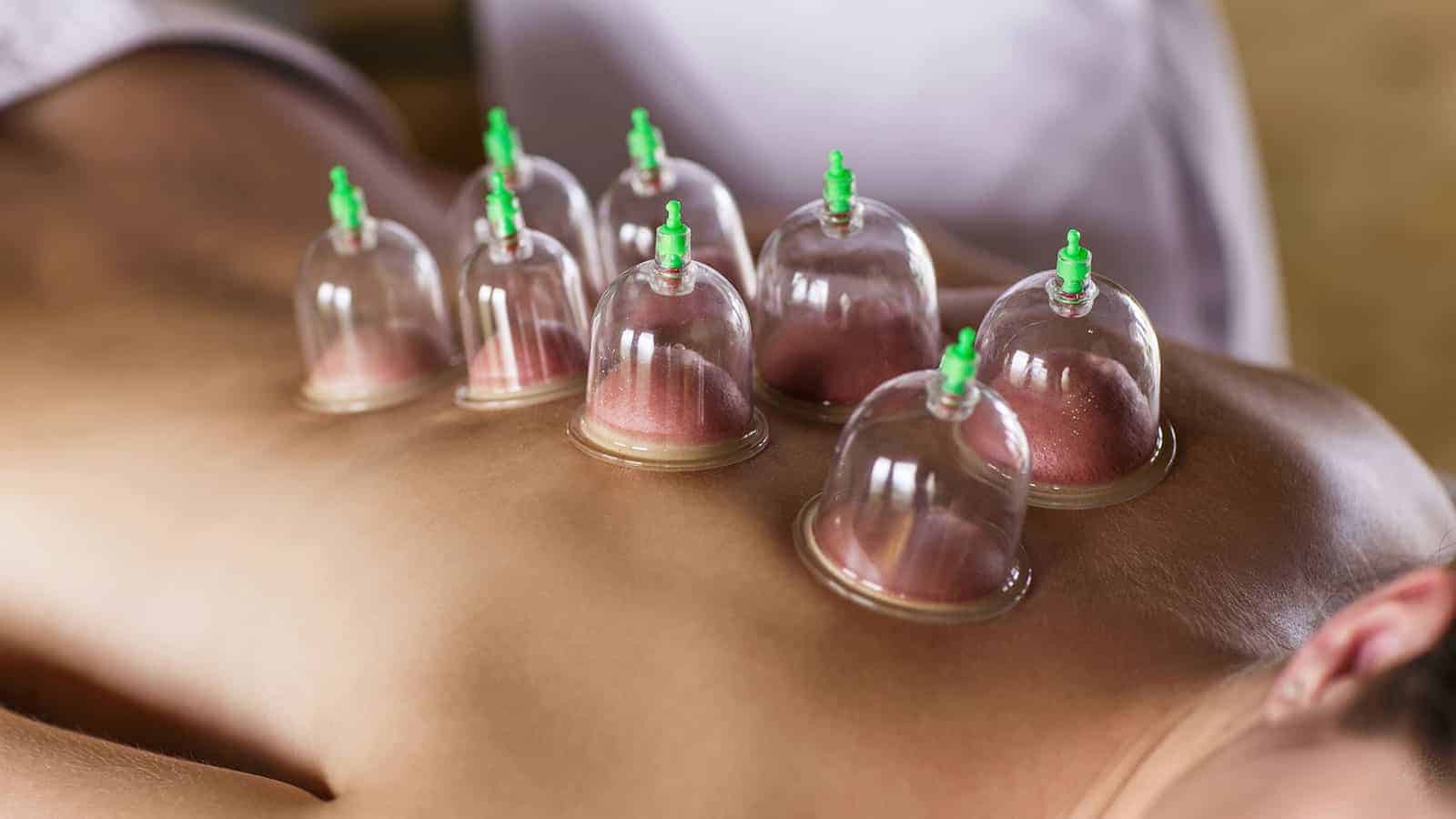The first time I had heard of cupping therapy, may well also be yours. Michael Phelps hit the news in August of 2016. The media wasn’t recognizing him for winning a gold medal in the Olympics. Instead, reporters mused about the round, purple bruises all over his body.
USA Today was just one of the media sources offering up an explanation of the bruising of this therapy. The article goes on to mention how many athletes subscribe to cupping as a means to help heal muscle tension and to improve blood flow. Many were a bit skeptical and doubtful at the concept.
Let’s explore how cupping therapy can reduce muscle tension and improve blood flow.
History of Cupping Therapy
Subhuti Dharmananda, Ph.D., and a Director at the Institute for Traditional Medicine in Portland, Oregon, wrote an article providing the history of cupping therapy. He states that cupping therapy is yet another Chinese treatment with its first recorded history dating back to the lifetime of Ge Hong. Ge Hong was a famous Taoist and herbalist who lived from 281-341 AD. He speaks of cupping in his book A Handbook of Prescription Emergencies.
At that time, they crafted cups from animal horns. Then, they used the horns to pull out pus from the body. Over time, they replaced horns with cups made of bamboo or pottery. Sometimes they heated the cups in an herbal mixture and then applied them to the skin. Additionally, they sometimes dry heated them placed a cup over an acupuncture needle.
WebMD states that cupping is spoken about in the oldest medical books, Ebers Papyrus, from the ancient Egyptians in 1550 B.C. There are also associations with the Middle East.
Currently, the philosophy behind cupping is more related to our bodies holding onto inflammation. In an article in SCL Health, practicing licensed acupuncturist and herbalist Dawn Powell-Londono is quoted as describing it this way: “If you have an injury, the swelling sometimes sits there, or if you have arthritis, the inflammation doesn’t go anywhere…..Cupping can help the body reabsorb the fluid and move the swelling out of the area.”
How does the cupping procedure work?
In the current century, cupping is performed using glass or silicone cups. Some may have a pump attached to aid in increasing the suction. The practitioner will heat the cups and then place them onto the skin. This creates a suction, pulling the tissue into the cup. Your blood naturally rushes to the area, increases blood flow, and loosens up the connective tissue.
This is similar to how a massage limbers up the connective tissue before any deeper muscle massage or to aid in breaking up scar tissue, which can restrict muscle movement.
Most often, healers place cups on muscles like your back, legs, neck, and shoulders. Furthermore, they might put one or multiple cups in one session. Typically, they apply suction from a few minutes to 20 minutes, depending upon how deep and the age of the inflammation or pain. Finally, they remove the cups by raising one side, effectively breaking the seal of suction.
The suction marks left may be slight, or as Michael Phelps so amply illustrated, they can create large discolored bruising circles. The cupping process itself does not hurt, and the bruising is usually related to the length of time left on, the suction intensity, or if you tend to bruise easily.
Different methods of cupping
The method described above is usually referred to as the “dry cupping method.” Two additional ways are the sliding method, air cupping, and the wet method.
1 – Sliding Cupping method
Usually, healers reserve the sliding cupping method for large muscles for pain and muscle cramps or spasms. They employ the technique during a massage where your body has been oiled. During the massage, they apply cups the same as above but then slide them over the large muscle area to encourage blood flow across the muscle.
2 – Air Cupping Therapy
Air cupping replaces, creating a vacuum with heat to simulating a vacuum via a pump that pulls the air out of the cup.
3 – Wet Cupping Therapy
Wet cupping utilizes the older Chinese method of incorporating cupping with an acupuncture method. In some acupuncture, a healer makes a slight prick in the skin to bleed it very slightly. In wet cupping, the same occurs before the practitioner applies the cup. They believe this process suctions out more toxins and cools the heat of inflammation in certain conditions.
What does cupping do to the body?
To the Chinese therapists, cupping is a treatment for the sluggish, inactivity of qi, and blood flow. They believe that stagnation causes pain and various diseases or conditions. Cupping revitalizes the area with an influx of fresh blood. It allows your qi to flow more easily, decreasing pain, tension, inflammation, and sucking toxins to the surface to be released.
In the United States and other Western cultures, cupping loosens the connective tissue and flushes blood to the surface to stimulate the area. This creates relaxation in the muscles and encourages cells to work together to address the issue.
The Proof from science about cupping therapy
Currently, limited data substantiate a multitude of claims regarding cupping therapy. Additionally, current studies include only a small sample and show a strong bias in conclusion. Does this mean cupping doesn’t work? No. However, it indicates that not all the claims are valid. Furthermore, it suggests that they need to conduct more research to determine if it works and then, why it works.
In addition to relieving muscle tension and blood flow, additional claims, including a 2012 study, are:
- Respiratory congestion conditions
- Arthritis
- Digestive issues
- Acne
- Inflammation or swelling from an injury
- Herpes Zoster
- Facial paralysis
- Neck and low back pain including lumbar disc herniation
- Cervical spondylosis
 Is there any harm in trying cupping?
Is there any harm in trying cupping?
There are no reports of cupping doing any harm. It is a relatively painless process that may leave bruising or circular patterns on your body. This said Healthline reports that it is not for everyone, and some people with certain conditions or using certain medications should proceed with caution and extra care from the practitioner.
- Not for children under the age of 4, and all children should only have short sessions.
- Women who are pregnant should not apply cups on the abdomen, nor the lower back.
- Seniors must be cautious due to the fragility of aging skin and potential reaction from your medication.
- Anyone on blood thinners should not do cupping therapy
- Women should not do cupping during their menstruation period.
- Do not do cupping if you have any form of sore, ulcer, skin irritation, including a sunburn.
- Anyone with an internal organ disease or disorder should not do cupping
- Anyone who has recently experienced a traumatic event.
 Final thoughts about cupping therapy
Final thoughts about cupping therapy
Many Olympic athletes embrace cupping therapy as beneficial for muscle tension or soreness and increasing blood flow. You’ll receive more significant benefits when pairing it with a massage therapy session.
That’s because once the blood rises to the surface begins healing sore muscles. The massage therapist can further break up the toxins and disperse them. Once outside of the area, the body will absorb and break them down, eliminating as waste.
Thus far, its lack of any contrary evidence against it allows cupping to be an alternative option to using it along with other therapies.












 Community
Community

